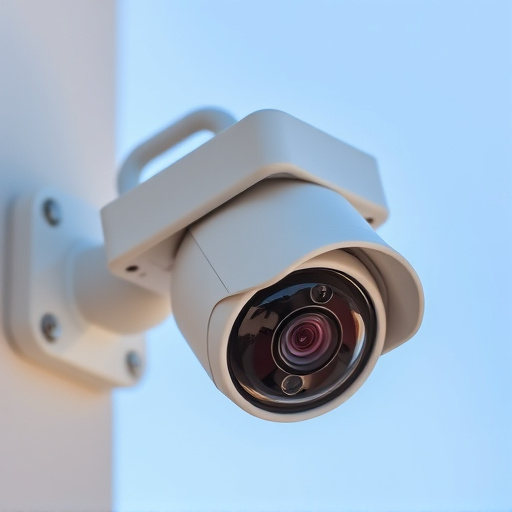Installing dummy dome camera systems offers a cost-effective way to boost home and business security. These realistic cameras act as visual deterrents, requiring minimal setup or monitoring fees. The straightforward installation process involves strategic placement at visible, hard-to-reach heights near entry points, blended with surroundings for realism. Regular changes in position enhance their deterrent effect. However, legal and ethical considerations regarding consent, notification, data privacy laws, and transparent use are crucial, especially in private spaces to protect personal privacy and foster community trust.
“Enhance your home or business security without breaking the bank with Installing Dummy Dome Camera Systems. This comprehensive guide explores the art of setting up fake security monitoring devices, offering a cost-effective solution for deterring crime. From understanding the technology behind these systems to strategic placement tips and legal considerations, we’ve got you covered. Discover how to create an illusion of protection while navigating ethical boundaries.”
- Understanding Dummy Dome Camera Systems
- Setting Up Your Fake Security Setup
- Placement and Discretion for Maximum Effect
- Legal Considerations and Ethical Use Cases
Understanding Dummy Dome Camera Systems
Installing dummy dome camera systems has become a popular choice for individuals seeking enhanced security measures, especially in today’s digital era where surveillance is an important aspect of home and business protection. These fake security monitoring devices are designed to look like real surveillance cameras, typically featuring a dome-shaped housing that mimics the aesthetic of traditional security equipment.
Understanding the functionality of these systems is key to their effective installation. Dummy dome cameras are not connected to any actual monitoring service or recording device. Instead, they serve as a visual deterrent, providing the appearance of comprehensive security without the need for complex setup processes or ongoing costs associated with real surveillance systems. This makes them an appealing option for those looking to enhance curb appeal and deter potential intruders without investing heavily in home security infrastructure.
Setting Up Your Fake Security Setup
Setting up a fake security monitoring device, particularly Installing Dummy Dome Camera Systems, can be surprisingly straightforward with the right equipment and a bit of planning. Start by choosing a location that offers a clear view of the area you want to monitor. Ensure these dummy cameras are strategically placed, mimicking real camera positions, to create an effective deterrent.
Next, connect the cameras to a central control panel or a recording device following the manufacturer’s instructions. Configure settings for motion detection and alerts to ensure you’re notified promptly of any activity. Regularly test your setup to verify its functionality, ensuring battery backups are in place for continuous surveillance, even during power outages.
Placement and Discretion for Maximum Effect
When setting up a fake security monitoring device, such as dummy dome camera systems, placement is key to maximizing their effectiveness. Strategically positioning these devices in visible areas can significantly deter potential thieves or vandals. Install them high enough to be out of reach and at angles that capture critical entry points of your property, like doors, windows, and garage openings. Discretion is also vital; ensure the cameras blend seamlessly with their surroundings to avoid drawing unwanted attention.
Consider placing these dummy cameras near real security sensors or alarms to enhance the illusion of a fully functional security system. Regularly changing their positions can further increase their deterrent value, making it harder for criminals to predict and adapt to your security measures. This simple yet strategic approach can go a long way in protecting your property.
Legal Considerations and Ethical Use Cases
When installing dummy dome camera systems, it’s crucial to understand the legal considerations that come into play. While these devices offer a cost-effective solution for business owners seeking enhanced security, they must be used responsibly and within the boundaries of the law. Each jurisdiction has specific regulations regarding surveillance technology, including requirements for obtaining consent, notifying individuals under observation, and adhering to data privacy laws. Ignoring these legal aspects can lead to severe consequences, including fines and damage to a company’s reputation.
Ethically, dummy cameras should be employed with transparency and integrity. They are not meant to deceive or mislead but rather serve as a deterrent and a visual reminder of surveillance. Using them in areas where genuine security measures are inadequate or as a temporary solution while waiting for proper installations is generally acceptable. However, deploying these devices in private spaces without consent or using them to invade personal privacy is a grave ethical breach that can foster mistrust and harm relationships within communities.
Installing dummy dome camera systems can be an effective way to deter crime and enhance security, providing a cost-efficient alternative to real surveillance equipment. By strategically placing these realistic-looking devices, you can create the illusion of a well-monitored area, thereby discouraging potential intruders. However, it’s essential to navigate legal considerations and use them responsibly, ensuring they don’t infringe on privacy rights. With proper placement and discretion, dummy dome cameras can serve as a powerful tool in securing your property or business without breaking the bank.
